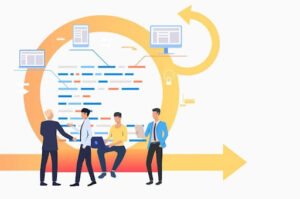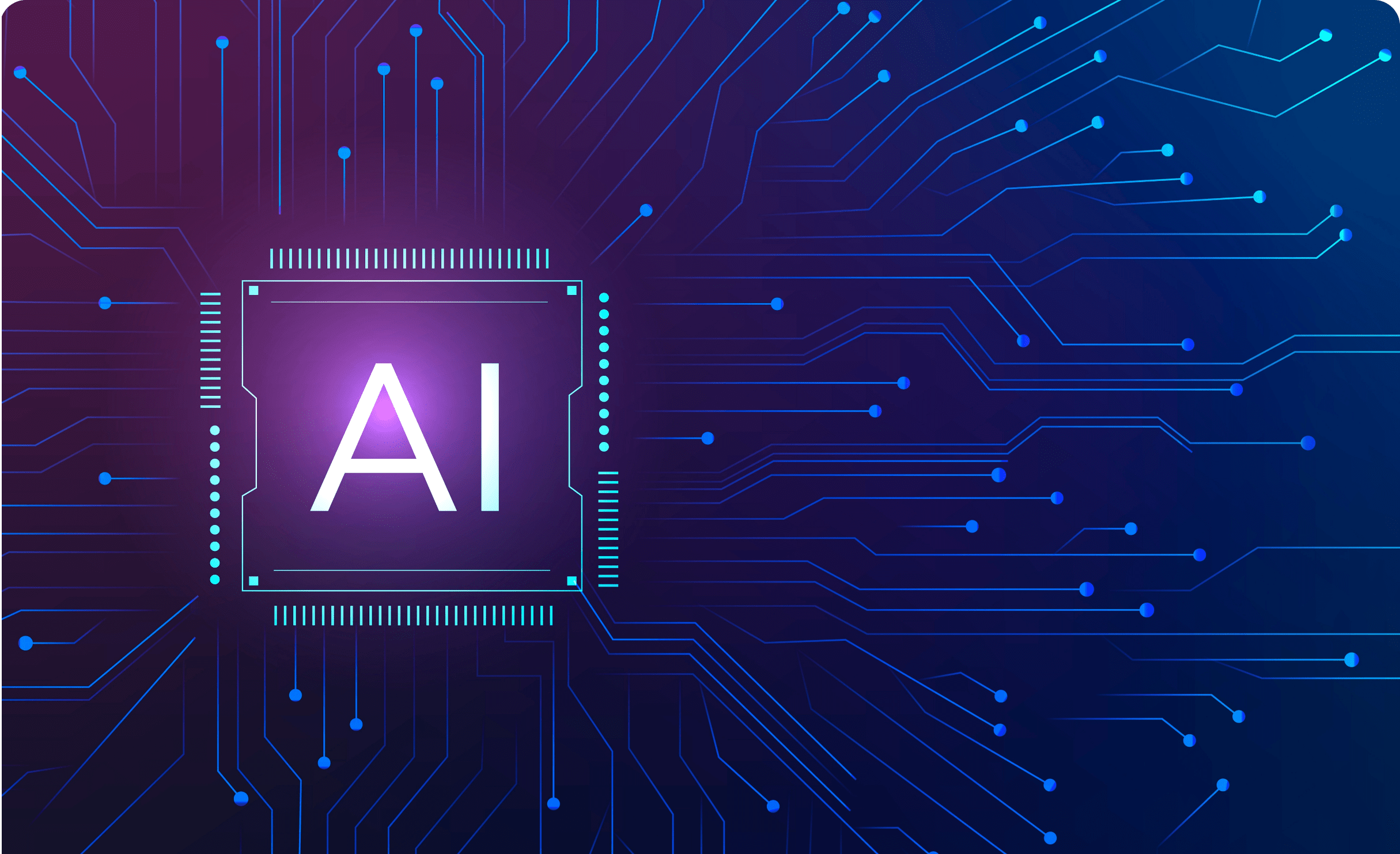Software development is the backbone of this digital age, driving the development of applications and programs that power our daily lives. In this article, we delve into the fundamental framework that guides this process—the Software Development Life Cycle (SDLC). This software development process encompasses the systematic approach to building software, comprising various phases, methods, and benefits essential for building efficient, high-quality software solutions.
Throughout this piece, we’ll explore each phase of the SDLC, discuss its methodologies, and the inherent advantages, all while maintaining a balance between technical depth and easy language for readers looking to understand the core of custom software development.
What is meant by Software Development Life Cycle (SDLC)?

The Software Development Life Cycle (SDLC) refers to the systematic process that software developers and teams follow to design, create, test, and deploy software. It’s the blueprint that orchestrates the entire journey of a software product from inception to maintenance.
This structured approach typically encompasses several distinct phases, each with specific objectives and deliverables. From the initial gathering of requirements and conceptualization of ideas to coding, testing, deployment, and ongoing maintenance, SDLC provides a framework that ensures efficiency, quality, and alignment with user needs.
At its core, SDLC serves as a structured approach for software development teams, enabling them to navigate complexities, mitigate risks, and focus on delivering a functional, reliable, and user-friendly solution.
Key Phases of the Software Development Process

A software development life cycle involves a certain set of phases necessary for the successful development of the product. An experienced and industry-leading software development company will ensure all these steps are carried out with utmost precision and care.
Planning
In this initial phase, the project’s scope, objectives, budget, resources, and timelines are defined. It involves outlining the roadmap and strategy for the software development process, setting the foundation for subsequent stages.
Analysis & Requirements
Here, the team analyses and gathers comprehensive requirements from stakeholders. This phase focuses on understanding user needs, functionalities, and system specifications, ensuring that the software aligns precisely with these requirements. A professional software development company like Square Root Solutions will provide you with a list of options for the development methodologies, technologies, platforms, etc. best suited to your objectives.
Software Design
The design phase involves creating a blueprint, architecture, wireframes or design prototypes for the software based on the gathered requirements. It covers both technical and creative aspects, defining how the system will look, and function and how users will interact with it.
Development
This phase involves the actual coding and programming of the software. This is usually the most time-involving and technical phase. Skilled software developers bring the designs to life, creating the software solution based on the established architecture, and following best coding practices and standards.
Frontend developers focus on crafting the user-facing elements, shaping the interface that users interact with. They utilise languages like HTML, CSS, and JavaScript to create visually appealing and user-friendly features. Backend developers, on the other hand, concentrate on the server-side logic, managing databases, and ensuring the seamless functioning of the software. Their expertise lies in languages like Java, Python, PHP, or Node.js, as they build robust and scalable server-side components.
Together, these software developers ensure not just functionality but also usability and performance in the final product.
Testing
Testing is crucial for ensuring the software’s functionality, reliability, and security. The phase involves rigorous testing, including unit testing, integration testing, and user acceptance testing, to identify and rectify any defects or issues.
Deployment
Deployment marks the release of the software to users. It involves the installation, configuration, and launch of the software in the production environment, making it accessible to its intended users.
Maintenance
The maintenance phase involves continuous support, updates, and upgrades post-deployment. A seasoned software development company
will ensure that your software remains efficient, secure, and aligned with evolving user needs, market trends and technological advancements.
Benefits of the SDLC

There are many benefits of a proper software development life cycle. Let’s have a look at a few of them.
Improved Quality Assurance:
SDLC ensures rigorous testing and validation at various stages, enhancing the software’s reliability, functionality, and security. This meticulous approach mitigates errors early in the development process, resulting in a higher-quality end product.
Communication and Collaboration:
The structured phases of SDLC facilitate clear communication among stakeholders, software developers, and other team members. This fosters collaboration, ensuring everyone stays aligned with project objectives, reducing misunderstandings, and enhancing efficiency.
Cost and Time Efficiency:
By outlining a systematic roadmap, SDLC helps in identifying potential bottlenecks or issues early in the development cycle, reducing the need for costly rework later. This proactive approach to custom software development minimizes time and optimisms resource utilization.
Adaptability and Scalability:
SDLC’s systematic approach allows for better adaptability to changing requirements. It enables developers to incorporate modifications or enhancements seamlessly, ensuring the software remains scalable and aligned with evolving needs.
Client Satisfaction and User-Centricity:
Following SDLC ensures that the software meets user expectations and needs. By involving stakeholders throughout the process and focusing on user requirements, SDLC ensures client satisfaction, resulting in a user-centric final product.
Different Software Development Life Cycle Methodologies
When you partner with a professional software development company like Square Root Solutions, you’ll be introduced to a variety of SDLCs suitable for your project and business goals. It is always recommended to discuss in detail with your development partner, the kind of methodology and approach you want for your project so that there is no obstacle or inefficiency later on.
Waterfall Model
The Waterfall Model follows a sequential approach, progressing through distinct phases—requirements, design, implementation, testing, deployment, and maintenance—in a linear fashion. It’s characterized by its structured and easy-to-understand nature, where each phase relies on the deliverables of the previous one, ensuring clarity but less adaptability to changes once a phase is completed.
It is suitable for projects with a fixed scope, sequential flow and well-defined, stable requirements, where changes are expected to be minimal once the project begins. Commonly used in industries like construction and manufacturing where requirements are more static.
Agile Methodology
Agile is an umbrella term encompassing various iterative and flexible approaches to software development. It emphasises adaptability, collaboration, and iterative development, aiming to deliver functional software quickly while continuously improving it based on feedback. It breaks the project into smaller increments called sprints, allowing for frequent reassessment and adaptation. Best for dynamic environments or when requirements are expected to evolve during the development process. Well-suited for software development, especially in startups or projects where rapid iterations are crucial.
-
Scrum Framework:
Scrum operates on short, fixed-duration iterations called “sprints.” It emphasises self-organisation within cross-functional teams, daily meetings (stand-ups), and constant feedback.
-
Kanban Method:
Kanban visualises workflow through a Kanban board, managing tasks by limiting work in progress (WIP). It promotes continuous delivery and smooth workflow by emphasising task management and flexibility.
-
Extreme Programming (XP):
Extreme Programming prioritises customer satisfaction and aims to deliver quality software quickly and continuously. XP involves practices like pair programming, test-driven development (TDD), continuous integration, and frequent releases, fostering flexibility and responsiveness to changing requirements.
Iterative Model
The Iterative Model divides the software development process into smaller cycles, each producing a prototype incrementally. This approach allows for repeated testing, refinement, and improvement of each iteration.
It’s effective for projects that can benefit from frequent and incremental developments or prototypes. Suited for projects where requirements might not be fully known upfront and need validation or refinement through iterations. Helpful in scenarios with evolving or unclear requirements.
Spiral Model
The Spiral Model integrates elements of both waterfall and iterative models. It involves risk analysis and mitigation in each cycle, allowing for gradual development and enhancement. It’s suitable for projects with high risks or uncertainties, emphasising continuous refinement and iteration. It’s also well-suited for large-scale projects with complex requirements or technologies that require extensive planning, risk management, and frequent evaluations.
Rational Unified Process (RUP)
RUP is an iterative software development process framework created by Rational Software, later acquired by IBM. It’s based on object-oriented design principles and emphasises iterative development, risk management, and continuous feedback. RUP is adaptable and flexible, providing guidelines, templates, and best practices throughout the development life cycle. It’s structured into phases (inception, elaboration, construction, transition) and disciplines (like requirements, analysis, design, implementation, and testing), encouraging iterative development within each phase and allowing for adaptability to changing requirements.
DevOps
DevOps is a methodology that focuses on collaboration, communication, and integration between software development and IT operations teams. It aims to shorten the development life cycle and provide continuous delivery with high software quality. DevOps integrates development, testing, deployment, and monitoring, emphasising automation and cultural change to achieve faster and more reliable software releases. Particularly useful in projects where there’s a need for continuous integration, deployment, and delivery.
Kickstart your dream project with us!
We have worked with some of the best innovative ideas and brands
in the world across industries.
Talk to Ciarán
Conclusion
Each Software Development Life Cycle (SDLC) methodology—like Waterfall, Agile, and others—suits specific project needs. There’s no ‘one size fits all. Understanding that no single methodology fits all projects is crucial. The diversity in SDLC methodologies underscores the importance of assessing project characteristics, such as scope, timeline, complexity, and stakeholder involvement, to determine the most suitable approach.
If you’re unsure which way to go, reaching out to an expert software development company can make a difference. At Square Root Solutions we can guide you to choose the best-fitting SDLC. Remember, the key is finding what works for your project’s unique needs, and then tailoring the approach to ensure smooth development and successful outcomes.




